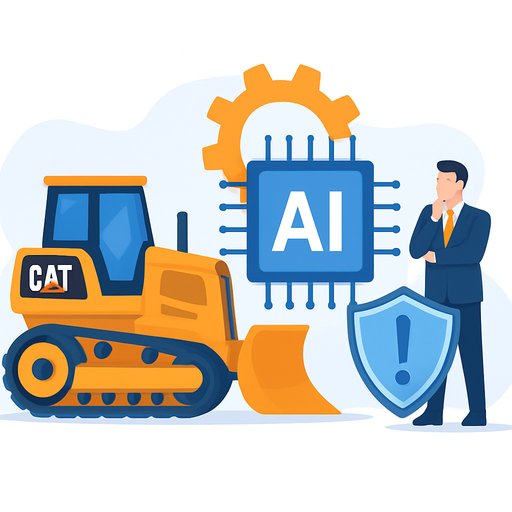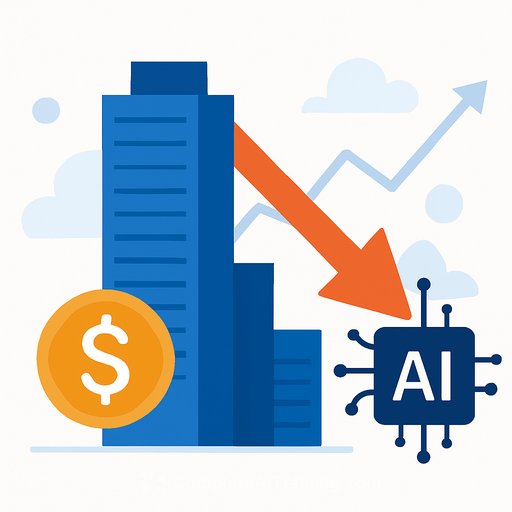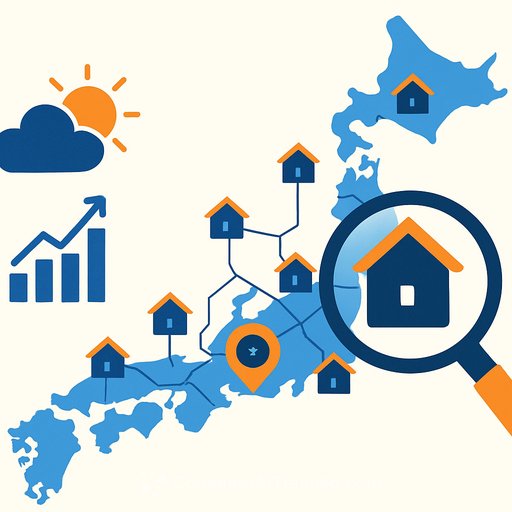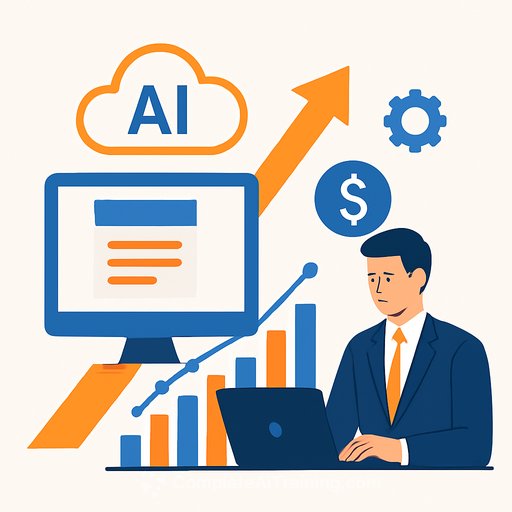Caterpillar's AI machines are changing the rules of equipment insurance
Energy-hungry data centers are multiplying. Operators want fewer people on-site and more automation. Caterpillar beat earnings and its stock jumped, but the real action for insurers is the exposure shift created by autonomous and remote-controlled heavy equipment.
Automation up, legacy down: how exposure is moving
Sales of autonomous and remote-control systems for mining have surged compared to pre-pandemic levels. Over the past nine months, demand for traditional trucks and bulldozers has trended down. Premium mix, severity drivers, and accumulation patterns won't look the same as they did even a year ago.
"The insuring of autonomous equipment requires differentiated policies and underwriting that understand not just drivers and operators but also contemplates the logic of machine decision-making including the underlying data and code," said Chad Eichelberger, president of Reliance Partners.
Hardware unbundled from software: new liability map
Caterpillar isn't just selling machines. It's selling retrofit kits, software, and licenses. One-time sales turn into ongoing service relationships, which makes the company both a manufacturer and a technology provider.
- Product liability expands beyond physical defects: Include algorithmic errors, latency, data drift, bad mapping, and failed updates as named causes of loss. Define what "accident," "malfunction," and "defect" mean in software-driven contexts.
- Blend Product + Tech E&O: Create combined forms or tight companion policies so gaps don't open between "bodily injury/property damage" and "pure financial loss" from software faults or service failures.
- Service agreements and SLAs: Clarify uptime guarantees, latency thresholds, patch cadence, remote support responsibilities, and remedies for missed SLAs. Consider sublimits for downtime and performance shortfalls.
- OT cyber as a bodily injury/property trigger: Endorse cyber forms (or property/liability forms) to respond if an ICS compromise causes physical damage or injury. Require segmentation, MFA, and incident response drills.
- Comms dependency: Address loss-of-signal, spectrum interference, and network outages. Allocate risk between OEM, connectivity provider, and site operator.
- Data rights and logs: Require access to telemetry, event logs, and version histories for underwriting, monitoring, and claims reconstruction.
Follow the money: services are the growth engine
Caterpillar aims to grow services revenue from $18B in 2019 to $28B by 2026. That commitment means longer-tail, software-heavy exposures. Underwriting needs to track contract terms, update policies at renewal, and tie pricing to service usage and software maturity-not just iron on the ground.
Cross-border remote operation: territory and venue headaches
Operators in one country can now run machines thousands of miles away. Claims may span multiple legal systems, regulators, and currencies. Traditional "coverage territory" language will miss key scenarios unless it's rewritten.
- Choice of law and venue: Pre-agree which jurisdiction governs disputes when operator, OEM, network, and site are all in different places.
- Admitted vs. non-admitted: Use fronting or controlled master programs to keep coverage valid where the machine operates and where the operator sits.
- Data residency and evidence: Specify where logs are stored, how long, and how chain of custody is preserved for claims and subrogation.
Underwriting checklist for autonomous heavy equipment
- System architecture: sensors, compute, comms paths, fail-safes, and manual override protocols.
- Validation: HIL/SIL testing, edge cases, regression testing, and independent safety assessment.
- Model governance: training data provenance, drift monitoring, rollback plans, and audit trails. See the NIST AI Risk Management Framework.
- OT security: segmentation, patching windows, credential hygiene, and incident response. Reference CISA guidance for ICS here.
- Human factors: operator training for remote setups, fatigue controls, and handoff procedures between human and machine.
- Environment: site mapping quality, geofencing, weather exposure, and line-of-sight obstacles.
- Vendors and APIs: responsibilities, indemnities, and insurance requirements for OEMs, integrators, and connectivity providers.
- Telemetry access: real-time monitoring, alert thresholds, and data-sharing agreements.
- Maintenance and updates: patch cadence, version control, rollback, and documentation.
Pricing and capital: from product risk to performance risk
As autonomy boosts productivity and extends machine life, new-unit sales may decline. Risk shifts toward lifecycle and performance exposures tied to retrofits and software. Pricing should reflect residual value changes, upgrade impacts on older equipment, and the chance of correlated losses from common-mode software faults.
- Consider parametric endorsements for downtime tied to verifiable outage metrics.
- Model correlated severity from a single flawed update or certificate failure across fleets.
- Use aggregate limits, reinstatements, or stop-loss to cap software-driven accumulation.
Claims and subrogation in a software-first loss
Loss adjustment now starts with logs. Event reconstruction must separate operator error, comms failure, and code defects. Keep chain of custody clean to support recovery against OEMs, integrators, or network providers.
- Require standardized data exports (timestamps, sensor states, model versions, patch IDs).
- Predefine causation tiers for faster coverage decisions and defensible reserves.
- Bake in cooperation clauses for joint forensics and fast access to telemetry.
What to do in the next 90 days
- Draft a blended Product + Tech E&O wording with clear triggers for software and service failures.
- Add OT-cyber endorsements that contemplate physical damage and injury.
- Create endorsements for SLAs, latency, and patch/rollback obligations.
- Update coverage territory, definitions, and choice-of-law language for cross-border remote ops.
- Issue an underwriting guide and risk-engineering survey specific to autonomous heavy equipment.
- Set data-sharing requirements for telemetry and incident logs at bind.
- Build a claims playbook for software-related losses, including vendor notification timelines.
- Pilot a parametric downtime product with tight oracles and auditability.
- Review reinsurance for correlated software events and aggregation controls.
This shift isn't a blip. It's a new operating model. Insurers that rework wording, underwriting, and claims around autonomy will find fresh premium pools-while avoiding silent exposures others inherit by default.
If your underwriting or claims teams need a fast ramp on AI and OT risk, see practical upskilling options by job role at Complete AI Training.
Your membership also unlocks:






